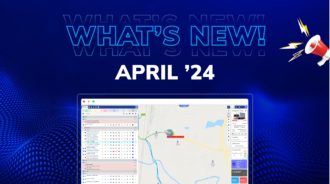Fleet driver management is a critical aspect of running a successful transportation business. Ensuring the safety of your drivers, optimizing fuel efficiency, and maintaining the overall health of your fleet can be a complex task. However, with the help of advanced fleet management software and a strategic approach, you can streamline your operations and enhance productivity. In this blog, we will explore some of the top tips for effective fleet driver management, with a focus on the latest trends in the industry and how they can be leveraged through advanced fleet management software.
-
Prioritize Driver Safety
One of the primary responsibilities of fleet driver management is ensuring the safety of your drivers. A safe driver is not only an asset to your business but also a legal requirement. Use advanced fleet management software to monitor driver behavior, such as speeding, harsh braking, and rapid acceleration. With real-time data, you can provide immediate feedback and coaching to drivers to help them improve their safety habits.
-
Implement Regular Training Programs
Continuous training is essential to keep your drivers up-to-date with the latest industry regulations and safety practices. Use your fleet management software to identify areas where drivers may need additional training and provide targeted programs accordingly. Regular training not only improves driver performance but also reduces the risk of accidents and violations.
-
Optimize Route Planning
Efficient route planning is crucial to reducing fuel consumption and delivery times. Utilize fleet management software to analyze traffic patterns and historical data to identify the most efficient routes for your drivers. By minimizing idle time and unnecessary detours, you can significantly reduce fuel costs and increase overall productivity.
-
Monitor Vehicle Maintenance
Proper vehicle maintenance is vital for fleet longevity and driver safety. Advanced fleet management software can track maintenance schedules and send alerts when it’s time for routine servicing. This proactive approach ensures that your vehicles are always in top condition, reducing the risk of breakdowns and costly repairs.
-
Embrace Telematics
Telematics technology, integrated into fleet management software, provides real-time data on vehicle location, speed, and performance. By leveraging telematics, you can monitor your fleet’s activities more effectively, identify areas for improvement, and make informed decisions in real-time. This technology can also be used to improve driver behavior and reduce fuel wastage.
-
Reduce Fuel Consumption
Fuel costs can be a significant expense for fleet operators. To reduce fuel consumption, use fleet management software to track fuel usage, identify fuel-efficient driving practices, and implement eco-driving techniques. Additionally, consider adopting alternative fuels or hybrid vehicles to further reduce your carbon footprint and lower fuel expenses.
-
Enhance Communication
Effective communication is key to successful fleet driver management. Use fleet management software to facilitate communication between drivers and dispatchers. Real-time updates on delivery schedules, traffic conditions, and route changes can help drivers make informed decisions, improving efficiency and customer satisfaction.
-
Stay Compliant with Regulations
The transportation industry is subject to numerous regulations, including hours-of-service (HOS) rules and vehicle inspections. Fleet management software can help you ensure compliance by tracking driver hours, maintenance schedules, and inspection records. Staying compliant not only avoids penalties but also enhances safety and reputation.
-
Analyze Data for Continuous Improvement
Advanced fleet management software generates a wealth of data that can be analyzed to identify trends and areas for improvement. Regularly review this data to make informed decisions and implement changes that lead to greater efficiency and cost savings. Transition words like “furthermore,” “moreover,” and “in addition” can help you connect ideas and make your content flow smoothly.
-
Embrace Automation
Automation is becoming increasingly prevalent in fleet management. Utilize advanced fleet management software to automate routine tasks such as vehicle tracking, maintenance scheduling, and performance monitoring. This frees up time for your team to focus on more strategic aspects of fleet driver management.
Conclusion
Effective fleet driver management is crucial for the success and sustainability of your transportation business. By prioritizing driver safety, embracing advanced fleet management software, and staying up-to-date with industry trends, you can optimize your operations and reduce costs. Remember to continuously analyze data, provide regular training, and foster open communication to ensure the long-term success of your fleet management efforts. With the right tools and strategies, you can navigate the challenges of fleet driver management and drive your business towards greater efficiency and profitability.



